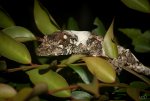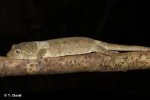Dragonborn Exotics (Ryan)
Chahoua Hatchling
- Messages
- 89
I know this is a highly debatable topic and I am opening pandoras box by bringing it up, but here it is. At this point in time, with no paperwork proving that a chahoua is either 100% mainland or 100% PI, does it make sense to keep selling them as such? I know there are some members here that have a lot of information that they could share. I'm not suggesting that having different locale identifications is worthless, but with the lack of genetic proof, at what point do we just start selling them all as "chahoua" with no locale ID?
Unrelated, but gargoyle geckos come in all sizes and colors like chahoua. Some reach over 100 grams, some stay in the 50 and 60 gram range. Some have short snouts and buggy eyes and some have longer snouts and their eyes don't look as buggy. Does that mean they are from different locales? Or possibly it's just due to a limited gene pool. I dont think there are any locale specific characteristics for gargoyles, but if I am wrong I appologize. I know that they have been collected from different areas on the Mainland. Sorry for derailing from the original topic, but I was using it as an example to provide a different perspective on the Mainland VS PI debate.
I personally like the look of what is classified as PI chahoua, and that's my personal preference.
Unrelated, but gargoyle geckos come in all sizes and colors like chahoua. Some reach over 100 grams, some stay in the 50 and 60 gram range. Some have short snouts and buggy eyes and some have longer snouts and their eyes don't look as buggy. Does that mean they are from different locales? Or possibly it's just due to a limited gene pool. I dont think there are any locale specific characteristics for gargoyles, but if I am wrong I appologize. I know that they have been collected from different areas on the Mainland. Sorry for derailing from the original topic, but I was using it as an example to provide a different perspective on the Mainland VS PI debate.
I personally like the look of what is classified as PI chahoua, and that's my personal preference.
Last edited:



